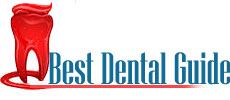What Causes Dental Plaque and Why Is It Harmful?
Dental plaque is a sticky, colorless film that continually forms in between and on the surface of the teeth. Dental plaque is a biofilm that is made up of microorganisms such as streptococcus mutans and other bacteria.
Plaque consists of microorganisms and extracellular matrix. The microorganisms that form the biofilm are mainly Streptococcus mutans and anaerobes, with the composition varying by location in the mouth. Examples of such anaerobes include fusobacterium and actinobacteria. The microorganisms present in dental plaque are all naturally present in the oral cavity, and are normally harmless. However, failure to remove plaque by regular tooth brushing means that they are allowed to build up in a thick layer. Those microorganisms nearest the tooth surface ferment dietary sucrose; it is in this state that they start to produce acids. Acids released from dental plaque lead to demineralization of the adjacent tooth surface, and consequently to dental caries. Saliva is also unable to penetrate the build-up of plaque and thus cannot act to neutralize the acid produced by the bacteria and remineralize the tooth surface. They also cause irritation of the gums around the teeth that could lead to gingivitis, periodontal disease and tooth loss. Plaque build up can also become mineralized and form calculus (tartar)
Continued plaque accumulation can contribute to structural damage to your teeth and the bone supporting the teeth and gums, as well as other health complications.
How Can Plaque Formation Be Prevented?
- To prevent plaque buildup, brush your teeth at least twice a day with a soft, rounded-tip bristled toothbrush. Using a fluoride-containing toothpaste also helps in removing dental plaque.
- Floss between teeth at least once a day to remove food particles and bacteria.
- See your dentist or oral hygienist every 6 months for a check-up and teeth cleaning.
- Application of dental sealants are a thin, plastic coating that are painted on the chewing surfaces of teeth to protect them from cavities and decay.
- Eat a balanced diet and limit the number of between-meal snacks. Eat nutritious foods such as plain yogurt, cheese, fruit, or raw vegetables. Vegetables, such as celery, help remove food and help saliva neutralize plaque-causing acids.
- Use of an antibacterial mouth rinse can reduce bacteria that cause plaque and gum disease, according to the American Dental Association.
- If you notice that your gums are red and inflamed, or that they bleed after you brush your teeth, it is important that you see your dentist.
- Gingivitis and early periodontitis can be controlled by routine professional teeth cleanings and more diligent brushing and flossing at home.

To prevent excessive plaque buildup in between visits to your dentist :
- Avoid sugary and starchy snacks.
- Eat a balanced diet.
- Stop using tobacco products.
- Brush your teeth twice daily using a fluoride-based toothpaste.
- Floss your teeth daily, or use an interdental cleaner.












Leave a Comment